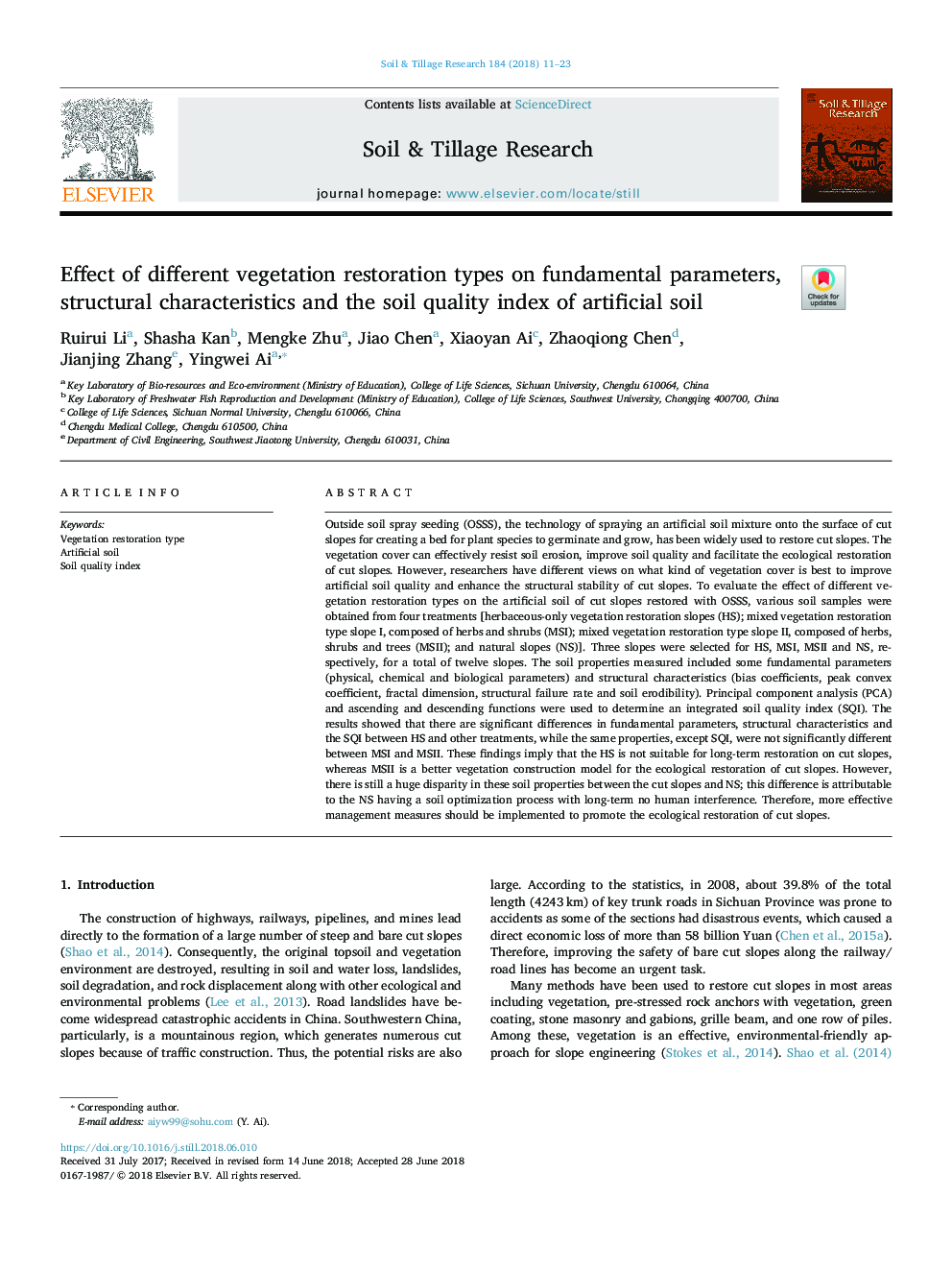| Article ID | Journal | Published Year | Pages | File Type |
|---|---|---|---|---|
| 6772873 | Soil and Tillage Research | 2018 | 13 Pages |
Abstract
Outside soil spray seeding (OSSS), the technology of spraying an artificial soil mixture onto the surface of cut slopes for creating a bed for plant species to germinate and grow, has been widely used to restore cut slopes. The vegetation cover can effectively resist soil erosion, improve soil quality and facilitate the ecological restoration of cut slopes. However, researchers have different views on what kind of vegetation cover is best to improve artificial soil quality and enhance the structural stability of cut slopes. To evaluate the effect of different vegetation restoration types on the artificial soil of cut slopes restored with OSSS, various soil samples were obtained from four treatments [herbaceous-only vegetation restoration slopes (HS); mixed vegetation restoration type slope I, composed of herbs and shrubs (MSI); mixed vegetation restoration type slope II, composed of herbs, shrubs and trees (MSII); and natural slopes (NS)]. Three slopes were selected for HS, MSI, MSII and NS, respectively, for a total of twelve slopes. The soil properties measured included some fundamental parameters (physical, chemical and biological parameters) and structural characteristics (bias coefficients, peak convex coefficient, fractal dimension, structural failure rate and soil erodibility). Principal component analysis (PCA) and ascending and descending functions were used to determine an integrated soil quality index (SQI). The results showed that there are significant differences in fundamental parameters, structural characteristics and the SQI between HS and other treatments, while the same properties, except SQI, were not significantly different between MSI and MSII. These findings imply that the HS is not suitable for long-term restoration on cut slopes, whereas MSII is a better vegetation construction model for the ecological restoration of cut slopes. However, there is still a huge disparity in these soil properties between the cut slopes and NS; this difference is attributable to the NS having a soil optimization process with long-term no human interference. Therefore, more effective management measures should be implemented to promote the ecological restoration of cut slopes.
Keywords
Related Topics
Physical Sciences and Engineering
Energy
Renewable Energy, Sustainability and the Environment
Authors
Ruirui Li, Shasha Kan, Mengke Zhu, Jiao Chen, Xiaoyan Ai, Zhaoqiong Chen, Jianjing Zhang, Yingwei Ai,
